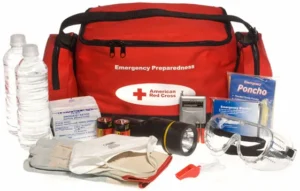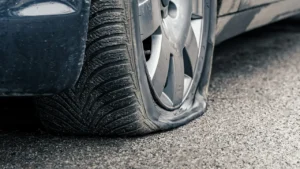Road trips can be one of the most exciting ways to explore new places, bond with family, or enjoy some time alone on the open road. The thrill of discovering hidden gems, stopping at quirky roadside attractions, and creating lasting memories with loved ones makes road trips so special. However, while the journey is filled with adventure and joy, it is important to recognize that unexpected challenges can arise along the way. It’s essential to be prepared for emergencies on the road. Knowing what to do can make all the difference, whether it’s a flat tire, a medical issue, or getting lost. Here are some practical safety tips to help you handle emergencies during your next road trip.
1 Create an Emergency Kit

Before you hit the road, put together an emergency kit. This kit should include
- First Aid Supplies: Band-aids, antiseptic wipes, pain relievers, and any personal medications.
- Basic Tools: A tire jack, wrench, flashlight, and jumper cables.
- Water and Snacks: Non-perishable snacks like granola bars and bottled water.
- Road Maps: GPS can fail having physical maps ensures you won’t get lost.
- Blankets: To keep warm if you get stranded.
What to Do in Case of a Car Breakdown

Experiencing a car breakdown can be stressful, but knowing how to respond can help ensure your safety and get you back on the road as quickly as possible. Here are the immediate steps you should take if your vehicle breaks down:
Immediate Steps to Take
- Pull Over Safely:
- As soon as you notice something is wrong with your vehicle, find a safe place to pull over. Aim to move your car as far off the road as possible, ideally onto the shoulder or into a parking lot. If you’re on a busy highway, look for an exit or rest area where you can stop safely.
- Turn on Hazard Lights:
- Once you’ve stopped, turn on your hazard lights immediately. This alerts other drivers that your vehicle is having issues and helps keep you visible in traffic.
- Stay Inside the Vehicle:
- If you’re on the side of the road, it’s usually safest to stay inside your vehicle with your seatbelt fastened. Exiting your car can expose you to traffic hazards, especially if vehicles are passing closely.
Assessing the Situation
Check for Safety:
-
- Before exiting your vehicle, assess the surrounding traffic. If it’s safe to do so, exit on the passenger side away from oncoming traffic.
Evaluate the Problem:
-
- If you feel comfortable, take a quick look at your vehicle to identify any obvious issues (like a flat tire or smoke). However, prioritize safety—if you’re unsure or if traffic is heavy, wait for help.
Handling Flat Tires on the Road

Flat tires are a common issue that can occur during road trips, but knowing how to handle them can save you time and stress. Here’s how to recognize a flat tire and change it safely.
Stay Calm and Find a Safe Spot
- As soon as you realize you have a flat tire, don’t panic. Turn on your hazard lights to alert other drivers.
- Slow down gradually and pull over to a safe location, such as a wide shoulder or a parking lot, away from traffic.
Use the Parking Brake
- Once you stop, immediately engage the parking brake to prevent the car from rolling.
Set Up Safety Markers
- Place reflective warning triangles or cones (if you have them) a few feet behind your vehicle to warn approaching traffic.
- If it’s dark, wear a reflective vest or bright clothing.
Check for Your Tools
- Make sure you have the following tools before proceeding:
- Spare tire (fully inflated)
- Car jack
- Lug wrench
- Owner’s manual (for vehicle-specific instructions)
Loosen the Lug Nuts
- Use the lug wrench to loosen the lug nuts slightly (do not remove them yet). Loosen them in a star pattern to ensure even pressure.
Raise the Vehicle with the Jack
- Consult your owner’s manual to find the correct jack point under the car.
- Use the car jack to lift the vehicle until the flat tire is a few inches off the ground.
Remove the Flat Tire
- Fully remove the loosened lug nuts and carefully take the flat tire off.
Install the Spare Tire
- Align the spare tire with the wheel bolts and push it into place.
- Screw the lug nuts back on by hand to ensure they’re secure, tightening in the same star pattern.
Lower the Vehicle and Tighten the Lug Nuts
- Use the jack to lower the car back to the ground.
- Once the car is stable, tighten the lug nuts securely with the wrench in the star pattern again.
Check the Spare Tire
- Ensure the spare tire is properly inflated. Most spare tires are designed for temporary use, so don’t drive long distances or at high speeds on it.
Drive to a Repair Shop
- After installing the spare tire, drive to the nearest tire repair shop to have the flat tire repaired or replaced.
Dealing with Accidents During a Road Trip

Accidents can happen unexpectedly during a road trip, and knowing how to respond is crucial for everyone’s safety and well-being. Here’s a step-by-step guide to effectively deal with accidents:
- Stay Calm: Take a deep breath and assess the situation. Check for injuries among passengers and yourself.
- Move to Safety: If it is safe to do so, move vehicles out of traffic to prevent further accidents. Turn on your hazard lights to alert other drivers.
- Call for Help: Dial 911 to report the accident and request medical assistance if anyone is injured.
- Exchange Information: Collect details from the other driver, including names, contact information, license plate numbers, and insurance information.
- Document the Scene: Take photos of vehicle damage, license plates, and the accident scene. This documentation will be helpful for insurance claims.
- Notify Your Insurance Company: Contact your insurance provider as soon as possible to report the accident and start the claims process.
- Seek Medical Attention: Even if you feel fine, consider getting checked by a medical professional, as some injuries may not be immediately apparent.
Conclusion
While emergencies can happen anytime during road trips, being prepared can make all the difference in how smoothly you navigate these challenges. By packing an emergency kit, keeping your vehicle well-maintained, knowing what steps to take during various emergencies, and staying calm under pressure, you can ensure that your adventure remains enjoyable despite any bumps along the way.
